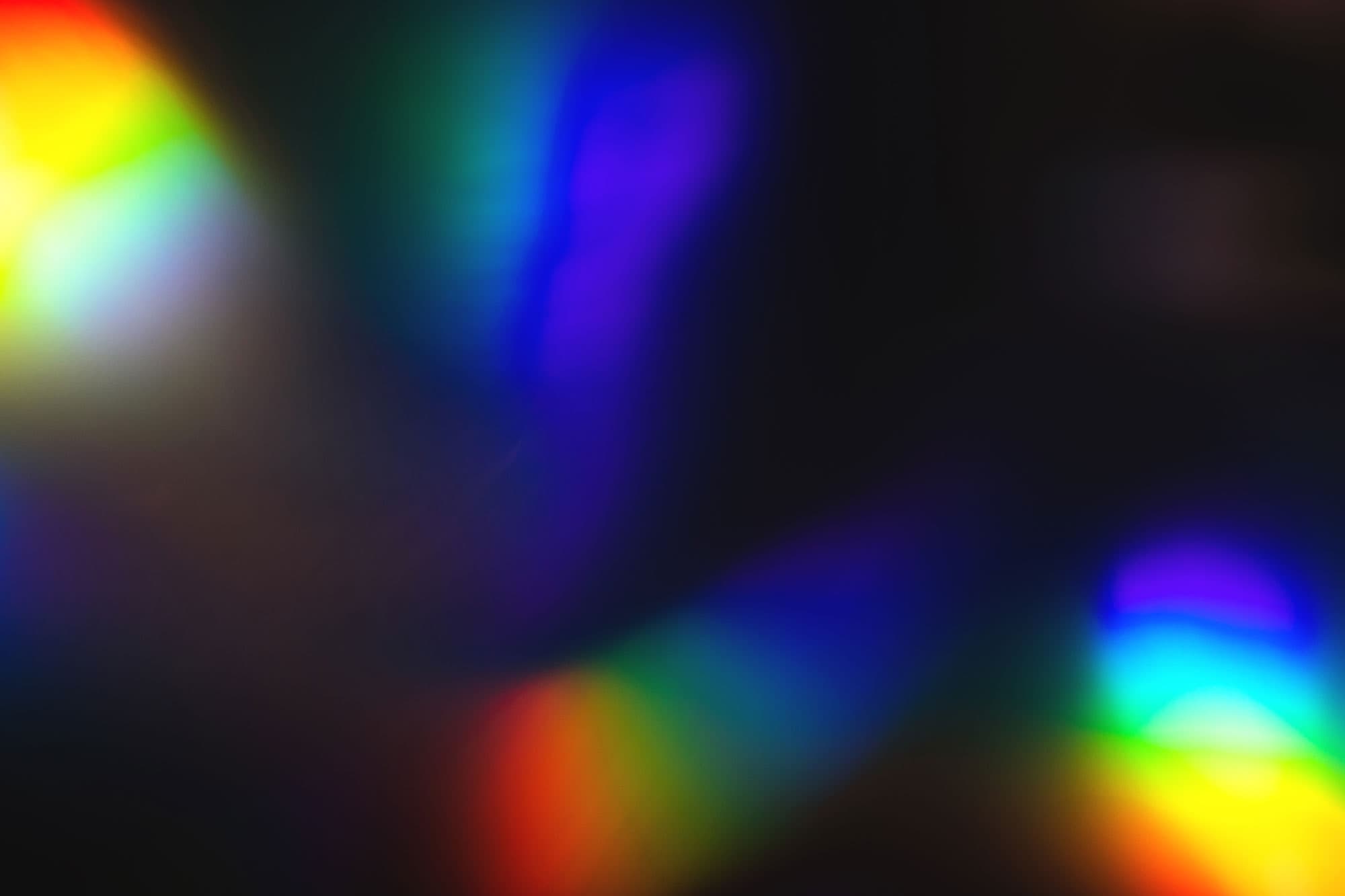OPTICAL SUBSTRATES OVERVIEW
There are likely numerous optical materials that can be used for your application. To find the best one for your application, you’ll need to consider the materials’ optical, mechanical, and chemical properties.
We’ve divided all the optical materials into material categories. Each material within a category, although similar to the others, will have its own optical properties, pricing, and availability.

Optical Substrate Data Sheets
Based on customer demand, we offer custom optical components made from the following substrate materials.
Material Category Properties
Optical Properties
Optical properties refer to how the material behaves with light.
The two most prominent optical properties for glass materials are the index of refraction and the Abbe number.
Index of Refraction
The index of refraction is the ratio of the velocity of light in a vacuum to the velocity of light in a refractive material for a given wavelength.
For example, light will travel through materials with a lower index of refraction quicker than materials with a high index of refraction because the higher refraction will bend light more.
Abbe Number
The Abbe number quantifies the amount of dispersion in a given spectral range. For example, a low Abbe number gives higher color dispersion while a high Abbe number reduces color aberration.
Mechanical Properties
The mechanical and thermal properties of optical materials indicate how the glass will perform under certain conditions and in certain environments.
The hardness and grindability of a material determine how it is processed in order to achieve good polishing quality whereas the density influences the weight of the final component.
Thermal properties
The thermal properties of optical materials determine how the material reacts in varying temperatures. This is important because optical materials are often used in environments with extreme temperatures and IR applications often produce a lot of heat.
The most important property to evaluate when choosing your optical material is the coefficient of thermal expansion; however, the thermal conductivity and the index gradient are also key indicators of how a material will act in an application.
The coefficient of thermal expansion refers to the rate at which the material expands or contracts at any given temperature. When interpreting material data sheets, the coefficient of thermal expansion in the temperature range between – 30°C und + 70°C in 10-6/K is denoted as: (α -30/+70).
Bubbles
Bubbles that originate from non-perfect refining processes are referred to as residual bubbles. Gaseous bubbles are often created by the melting process and are usually unavoidable.
Bubbles are categorized based on bubble size and concentration in a defined space.
Optical glass is generally free of bubbles, but they cannot be completely avoided.
Bubbles in optical material may cause light scattering and loss of transmission due to absorption. In most optical systems, inclusions do not create significant problems, but for some systems, the presence and size of bubbles can be an issue. Applications such as high energy lasers, beamsplitter prisms, and high pitch gratings must be made with glasses that have a minimal number of bubbles.
Knoop Hardness
The Knoop hardness test is used to determine how resistant a glass material is to indentation. It is the standard test used to measure a material’s hardness. In the material data sheets, Knoop hardness can be denoted as HK.
The formula used to determine this property is:
HK = 14.229(F/D2)
In this equation, F stands for the applied load measured in kilograms-force, and D2 stands for the area of the indentation measured in square millimeters.
Knoop hardness can also affect a glass supplier’s ability to get better cosmetics and affect the time it takes to polish and grind the glass.
Homogeneity
The homogeneity of a material indicates how well the material was melted together to combine the different parts that make up the glass. The better the particles are mixed together, the more likely the material is to transmit a wavefront accurately. Therefore, better homogeneity is required for tighter transmitted wavefront requirements.
Chemical properties
Chemical properties of a glass determine how the glass holds up against water, moisture, acids, and alkalis. There is not a definitive way to measure and assess the chemical properties of optical glass, so the tests and units of measurement for chemical properties differ depending on the optical glass manufacturer you choose.
The five resistance tests that have been internationally standardized across the industry are:
- Acid resistance test SR
- Alkali resistance test AR
- Phosphate resistance PR
- Climate resistance CR
- Stain resistance FR
When it comes to environmental influences and chemical demands, there is a wide range of resistance among different glasses. What’s more, one test cannot adequately describe the chemical behavior of all kinds of optical materials. In order to choose the right glass for your application, you must consider the results of several tests.
Acid Resistance
Acid resistance describes the behavior of the glass when it comes in contact with larger quantities of acidic solutions. This is measured by the precision removal of a very thin layer of glass when exposed to acid. This can involve testing with both weak and strong acids depending on the acid resistance of the glass types.
Alkali Resistance
Alkali resistance describes the sensitivity of the material when in contact with warm, alkali liquids. This is measured by the precision removal of a very thin layer of glass using alkali. This is important for the manufacturer making the optics as it could affect the performance of the grinding and polishing processes.
Phosphate Resistance
Phosphate resistance describes the sensitivity of the material when in contact with washing solutions that contain phosphates. This is measured by the precision removal of a very thin layer of glass using phosphates.
Climate Resistance
Climate resistance describes how the glass behaves in environments with high relative humidity and high temperatures. High levels of water vapor in the air, especially at high temperatures, can cause a cloudy film to build on the glass surface that generally can’t be wiped off, which is a chemical reaction with water in deficiency.
Stain Resistance
Stain resistance does not refer to resistance on climatic change (see above) or highly acidic solutions, but provides information about possible changes in the glass surface, or stain formation, in acidic water without vaporization. Stain resistance class FR0 contains glass that shows virtually no stains after 100 hours of exposure in Sodium Acetate Buffer pH 4.6.
There are some glasses that do not form stains, but have low acid and climatic resistance. In these types of glass, layers of the glass can be removed during testing without stain formation.







